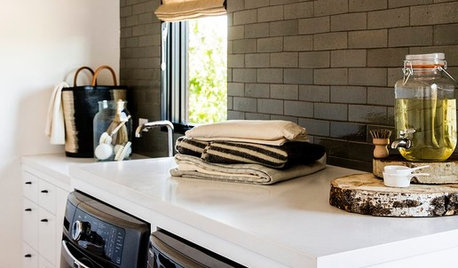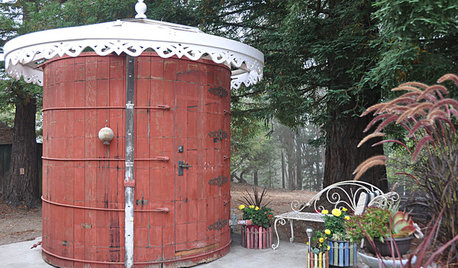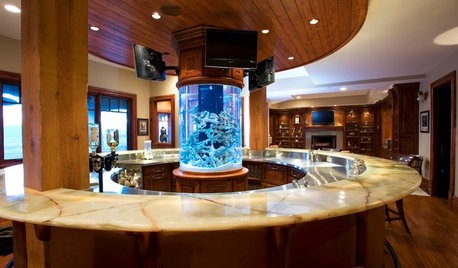How to clean up an old tank
nathanhurst
19 years ago
Related Stories

FURNITUREOld Furniture: Clean, Reupholster or Replace It?
A veteran upholstery cleaner weighs in on the options for found, inherited and thrift store furniture
Full Story
HOUSEKEEPINGClean Up Your Cleanup Zones
Make chore time more pleasant by tidying up your laundry room and updating cleaning tools
Full Story
FALL GARDENING7 Reasons Not to Clean Up Your Fall Garden
Before you pluck and rake, consider wildlife, the health of your plants and your own right to relax
Full Story
THE HARDWORKING HOMEMudrooms That Really Clean Up
The Hardworking Home: Houzz readers get down and dirty with their ideas for one of the home’s hardest-working rooms
Full Story
HOUZZ TOURSHouzz Tour: An Eclectic London Townhouse Cleans Up
White finishes strategically juiced up with color give a newly renovated Victorian graphic style
Full Story
OUTBUILDINGSSee an Outdoor Bathroom Made From a Water Tank
This repurposed fixture in a California backyard is now the owners' favorite bathing spot
Full Story
DECORATING GUIDESDesigning Nemo: 30 Fish Tanks Make a Decorative Splash
Bring an otherworldly glow and a calming vibe to your home with the living art of an aquarium
Full Story
MOST POPULARThanksgiving Tales: When the Turkey Tanks
Houzz readers prove adept at snatching victory from the jaws of entertaining defeat
Full Story
MOST POPULARHouzz Tour: A Playful Home Drawn Up by 8-Year-Old Twins
Plans for this innovative tower home in Melbourne were going nowhere — until the homeowners’ twins came to the rescue
Full Story
HOUZZ TOURSHouzz Tour: Mixing It Up in a Century-Old Edwardian
Different eras, patterns and textures mingle beautifully in a Canadian interior designer's home and 'design lab'
Full Story






mrbreeze
nathanhurstOriginal Author
Related Professionals
Summit Landscape Architects & Landscape Designers · Matteson Landscape Contractors · Santa Maria Landscape Contractors · Cockeysville Fence Contractors · Pasadena Fence Contractors · Richmond Fence Contractors · Santa Clarita Fence Contractors · Van Nuys Fence Contractors · Winter Park Fence Contractors · Santa Fe Fence Contractors · Glendale Heights Window Contractors · University Window Contractors · Chillicothe General Contractors · Kemp Mill General Contractors · Miami Gardens General Contractorssahoyaref